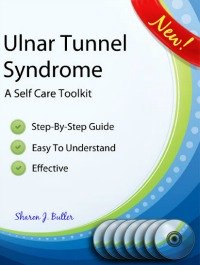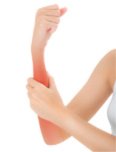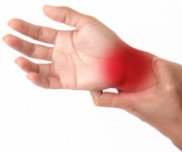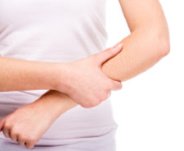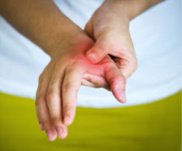Ulnar Tunnel Syndrome Symptoms
Tingling And Numbness In The Ring And Little Fingers
The most common Ulnar Tunnel Syndrome symptoms are tingling and numbness that are felt in the ring and little fingers of the hand. Along with numbness, it is also common to feel a pulling or drawing sensation that feels like a tight line of strain going through the forearm and into the hand along the outer forearm.
UTS symptoms can also include a deep ache, or a sensitivity at the ulnar tunnel itself. Symptoms are often felt when resting the elbow or forearm on a hard surface. In more involved cases, the same level of pain can be felt when anything at all puts pressure on the elbow. Pulling and drawing sensations are usually felt when moving the arm.
Deep Aching In The Elbow And Forearm
The body has a tendency to form adhesions at points where the body is under unnatural strain. Strain occurs as a result of repetitive motion, unbalanced posture, the effect of old surgeries or injury and even stressful habits, including prolonged periods of pressure.
An adhesion is a bundle of fascia that becomes thickened and sticky. Every nerve and every blood vessel is encased in a sheath of this fascia which is there to protect the nerve or blood vessel from undue wear and tear as it moves with the body. As a result of this design, nerves and blood vessels are prone to developing adhesions anywhere along their path.
Ideally, the ulnar nerve should slide and glide through its tunnel, protected and cushioned by the fascial sheath that surrounds it. In the case of Ulnar Tunnel Syndrome, the body perceives strain and creates adhesions that glue the nerve to the bony ulnar tunnel itself or anywhere along the pathway of the ulnar nerve through the armpit and the arm. Every time the elbow is bent or straightened, the nerve gets tugged and irritated at the point of the adhesion. This causes the nerve to fire inappropriately and leads to the numbness and tingling that is characteristic of Ulnar Tunnel Syndrome.
Another very common site of adhesions is as the nerve passes alongside the triceps muscle at the back of the upper arm, just above the ulnar tunnel. It is quite common to find the nerve stuck to the triceps which causes symptoms every time the elbow is bent. Because of the involvement of the triceps muscle, symptoms may also show up when the triceps is engaged while lifting weight. Examples include lifting a baby with the arms extended forward of the body, weight lifting at the gym, or pulling a heavy weight toward the body.
The ulnar nerve can also exhibit numbness and tingling when the nerve is compressed. This phenomenon occurs when the nerve is squeezed between two structures. This can sometimes happen when
- the nerve passes between bone and a muscle
- the nerve passes between two muscles
- the nerve is pressed against some other surface
The tight muscle presses on the nerve causing it to fire and produces its characteristic symptoms. A very common expression of this pressure comes when sleeping. Even though mattresses and pillows are cushioned, the pressure of the weight of the arm can be enough to generate symptoms in the nerve. This often happens when other locations along the ulnar nerve pathway are adhered as well.
Both of these types of tissue conditions need to be uncovered and restored to a more normal condition before the symptoms of Ulnar Tunnel Syndrome will subside. Tight muscles need to be lengthened so they no longer compress the nerve and adhesions need to be carefully peeled away from their anchoring so the nerve can move freely in its sheath once again.
Complete instructions in how to accomplish the releases necessary to free up the ulnar nerve are included in the Ulnar Tunnel Syndrome Self Care Toolkit.
If you would like to continue reading more about Ulnar Tunnel Syndrome, visit the following sections:
Ulnar Tunnel Syndrome Self Care
Click the block below that most closely matches your injury for more information and to find the Toolkit we offer to help you in your recovery.
